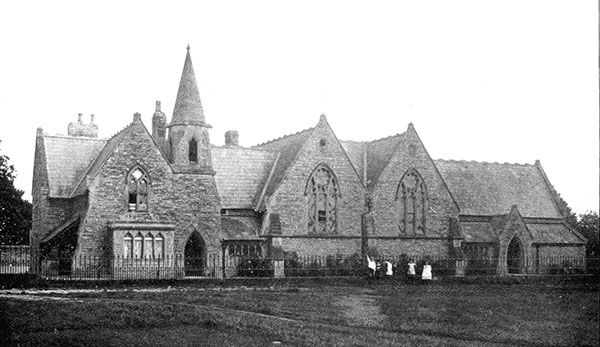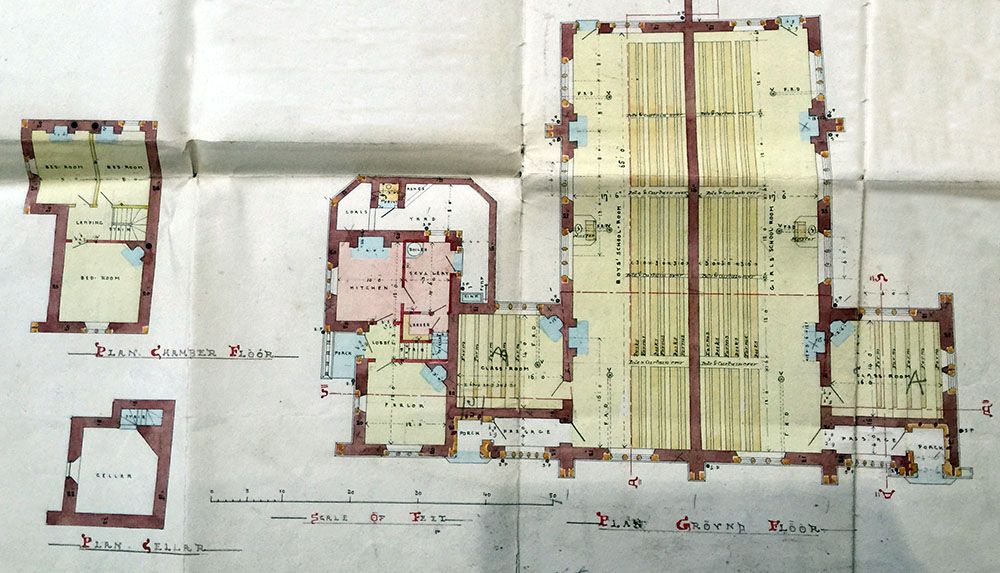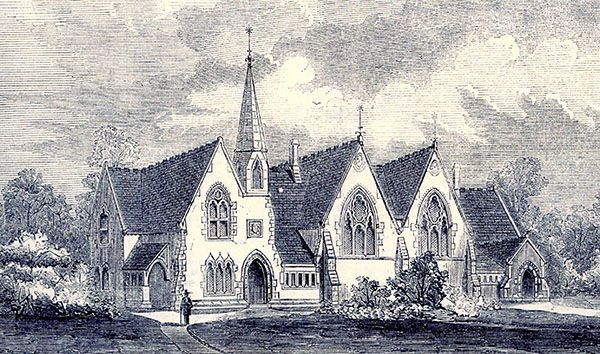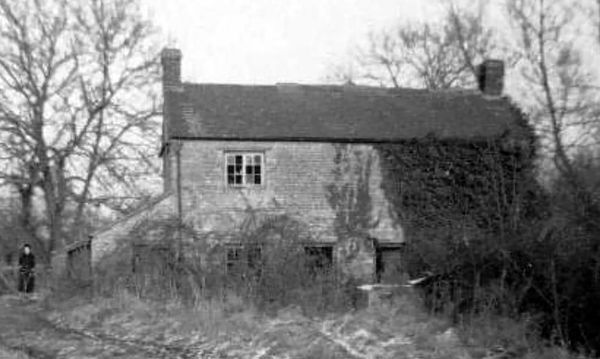Founding the National Schools
Now the home of OYAP and a number of other local organisations, the old St Edburg’s School building, on Cemetery Lane, originally opened as the Bicester National Schools on 1st June 1859, under the control of the schoolmaster, Mr Pendlebury, and schoolmistress, Miss Annie Underwood. Over 300 children enrolled on the first day, some from the various small church schools in the town, but a lot having had no previous education at all.

The building work took 11 months to complete from the laying of the foundation stone on Tuesday 6th July 1858. A day that was so important to the local community that the whole town closed down for the afternoon to celebrate.
Early in the morning Plant’s Band paraded through the town, reminding all as they woke up that the day was a day of festivity and rejoicing. Arches of evergreens, flags, banners and flowers were quickly erected in the morning and at noon the shops were closed and the Thame Royal Brass Band arrived to enliven the proceedings.
The church bells rang out a merry peal and at one o’clock the procession began to form in the close at the back of Mr Shillingford’s residence on the Causeway. By two o’clock all was ready and the procession, headed by the Thame Band, entered the town via Mr Kirby’s garden (across a temporary bridge erected over the River Bure).
Arriving at the site of the new building, the band played the National Anthem whilst the children were arranged in their places. The proceedings began with a hymn, after which the Rev. T. J. Lingwood offered up a prayer asking God’s blessing upon the undertaking.
Before preceding to the ceremony of laying the stone, the Rev. J. W. Watts addressed the crowd with a characteristically lengthy speech.
He began by stating that it was the happiest day of his 15 years in the parish. He remarked that they were living in an age of general enlightenment, when education was the great question of the day and if they would wish to see a moral improvement among the dense masses of the working population, they must take in hand the rising generation, and seek to train them up in the fear of the Lord. And by the implanting of solid scripture principles, they might adorn their situation in life, however humble, by reducing Christian principle to Christian practice.
He thanked Sir Edward Page-Turner for freely granting the land for the site of the building. He also thanked the subscribers generally, and the Members of the Committee.
Rev. Watts then proceeded, assisted by Mr Munday, the builder, to lay the foundation stone. Below it they placed a glass bottle containing a prospectus of the Schools and the following document printed on parchment.
“BICESTER NATIONAL SCHOOLS - The Foundation Stone, of these Parochial Schools, erected by Voluntary Subscriptions, aided by Government, was laid on the 6th day of July 1858, to the honour and glory of God, by the Rev. John William Watts MA, Vicar of this parish, in the presence of the Rev. Thomas John Lingwood HA, Curate, the Members of the School Committee, and Parishioners at large.”
The ceremony ended with the band playing “God Save the Queen” and a hearty three cheers from the crowd. The procession then re-formed and marched to Mr Woodward’s field, where all the children in the town were given tea and cake.
Once tea was over everyone moved to the adjoining field where the Annual Rural Festival of the Bicester Literary Institution was taking place. Picnic parties were formed in various nooks and shady places. Then came rural games to please the children. Racing matches, bobbing for oranges, jumping in sacks and bun-eating were much in vogue, and were carried on with great vigour. Two bands were engaged to play quadrilles and country dances.




